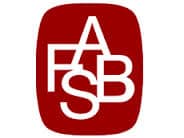The Financial Accounting Standards Board (FASB) issued a new set of standards for revenue recognition along with the International Accounting Standards Board (IASB) on Wednesday. These standards are the result of several years of work between the two entities to converge their standards, reduce the number of industry-specific differences, and make the standards less proscriptive and more principles-based.
At a basic level, this new standard seeks to replace the large number of industry-specific revenue recognition rules in the U.S. (over 100 of which exist) with a basic 5-step framework:
Step 1: Identify the contract(s) with a customer.
Step 2: Identify the performance obligations in the contract.
Step 3: Determine the transaction price.
Step 4: Allocate the transaction price to the performance obligations in the contract.
Step 5: Recognize revenue when (or as) the entity satisfies a performance obligation.
That all sounds straightforward in principle, but of course achieving those goals is not always so simple. The full standard runs 700 pages long with all the amendments and background information presented. These amendments give guidance on specific issues related to revenue recognition and outline the increased disclosure that will be required from companies under the new rules.
Ideally, the new rules should lead to a more principles-based system that allows companies to better reflect the underlying economics of transactions. Former FASB chairman Bob Herz expressed a desire for standards to move in this direction when I spoke with him last year.
“I favor more objectives-oriented or outcomes-based standards, with enough explanation and education so you can then understand how to apply it and leave it up to people’s judgments without having to write prescriptive rules and guides on every possible thing you can think of,” Herz said.
The length and complexity of this standard means that its effectiveness will depend largely on the ability of FASB and IASB to communicate with companies and make sure the standard is applied and enforced appropriately and equally.
What Does This Mean For Investors
The average investor likely won’t be affected by this new standard for a couple years, as companies aren’t required to implement the new rule until 2016 in the U.S. and 2017 internationally. When companies do begin reporting under the new standards, some industries will likely experience significant changes.
The vendor-specific objective evidence (VSOE) requirement that often forced software companies to delay revenue recognition will be eliminated, meaning companies in this industry will likely have to defer less revenue when the new standard is implemented. Real estate and telecom companies will also have significant barriers to revenue recognition removed.
This new standard also helps to converge U.S. GAAP standards and International Financial Reporting Standards (IFRS). This ensures a greater degree of comparability between the filings of U.S. and international companies and should make it easier for investors to evaluate a greater range of stocks.
For many other companies, the income statement likely won’t change much, but greater disclosure will be required in the financial footnotes. I support companies giving more information to investors about the nature of their transactions, but these additional disclosures will make the already long corporate filings even longer. Investors are going to have an even harder time poring through the hundreds of pages to find the truly important data hidden in the footnotes.
Sam McBride contributed to this report.
Disclosure: David Trainer and Sam McBride receive no compensation to write about any specific stock, sector, or theme.
